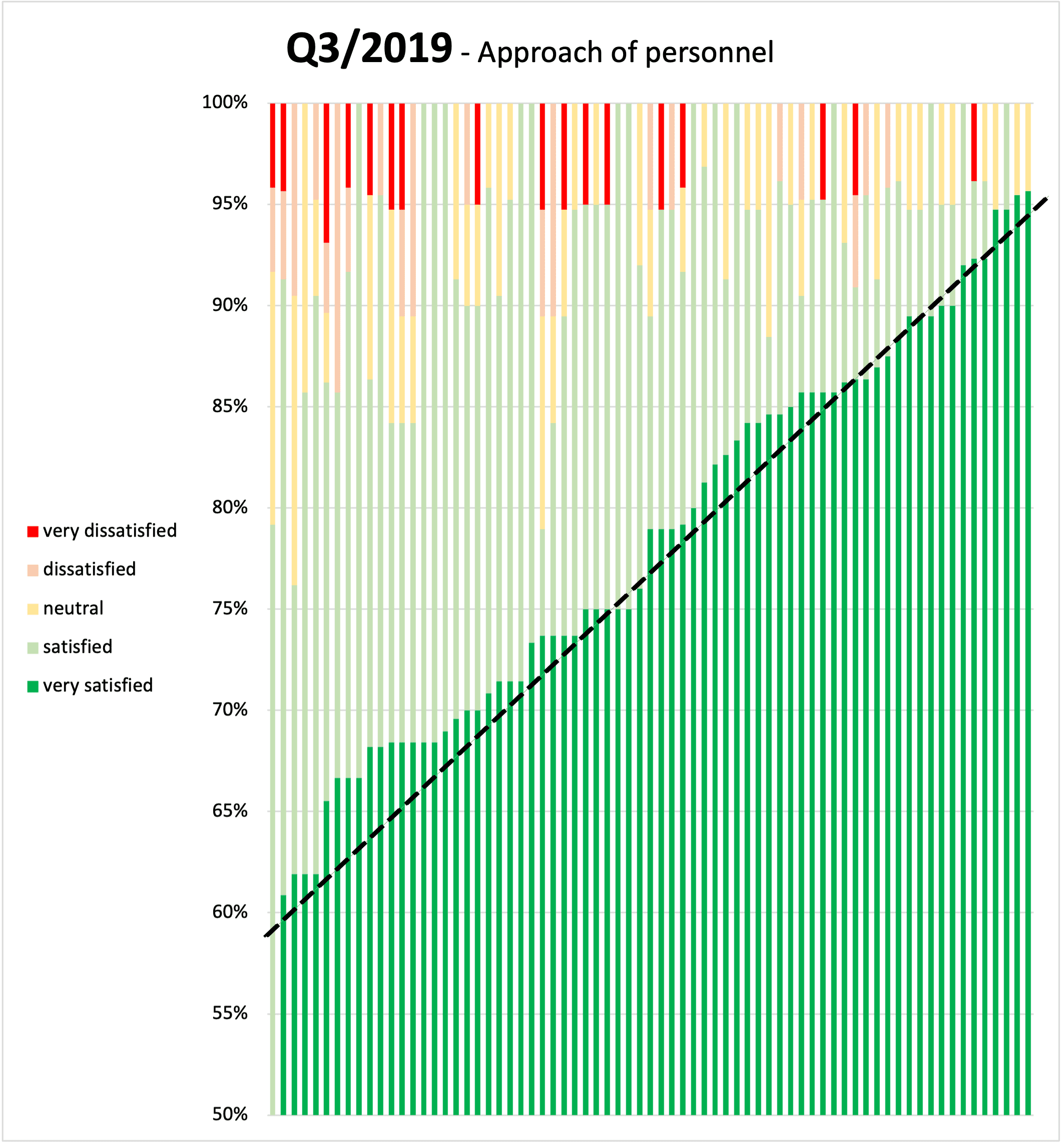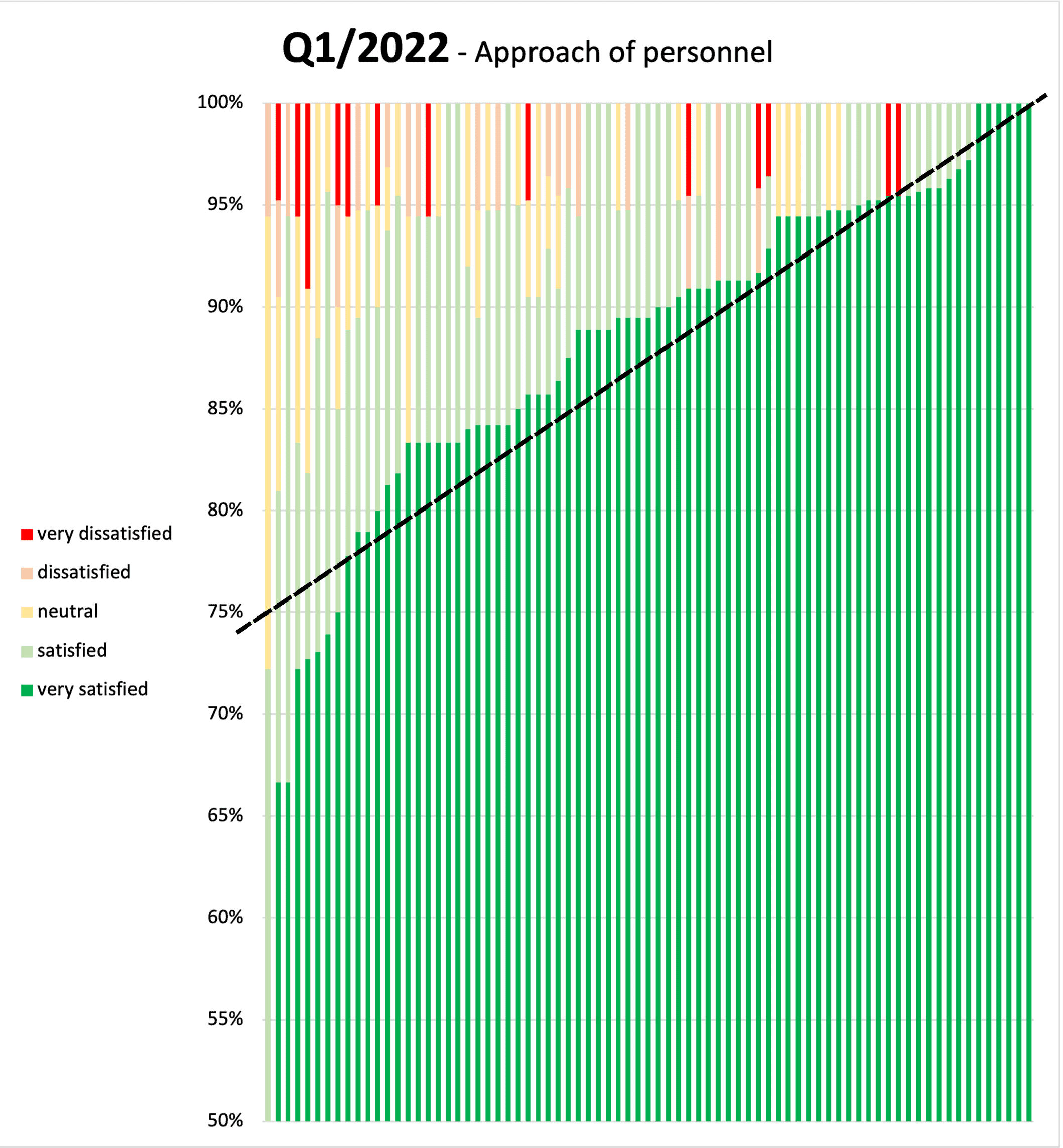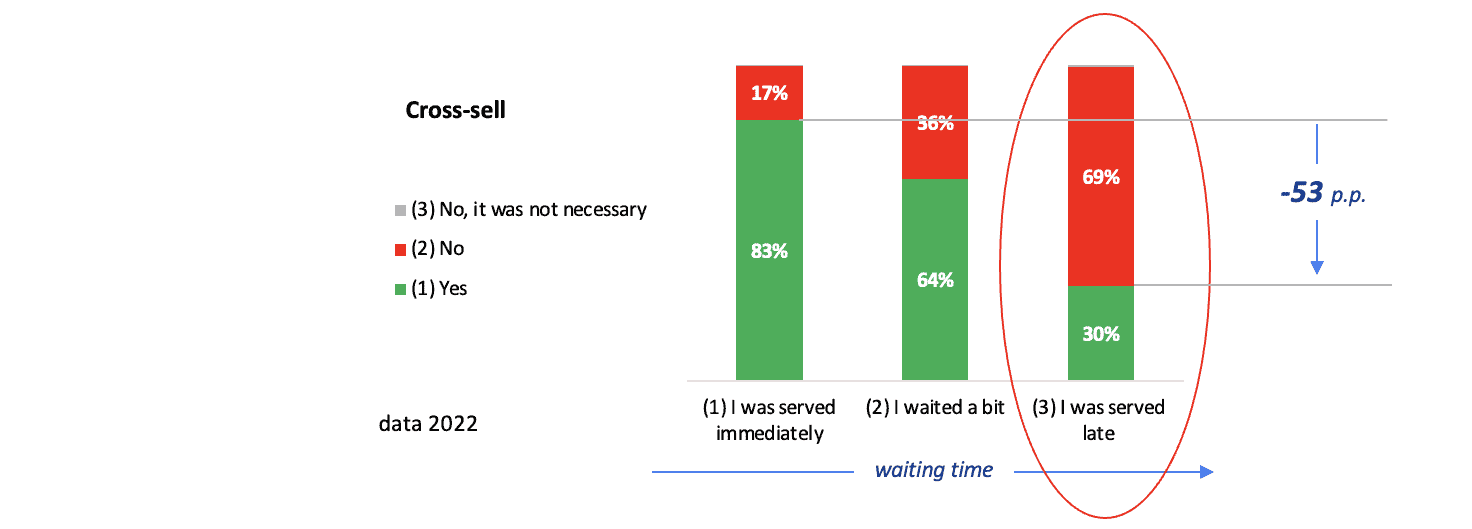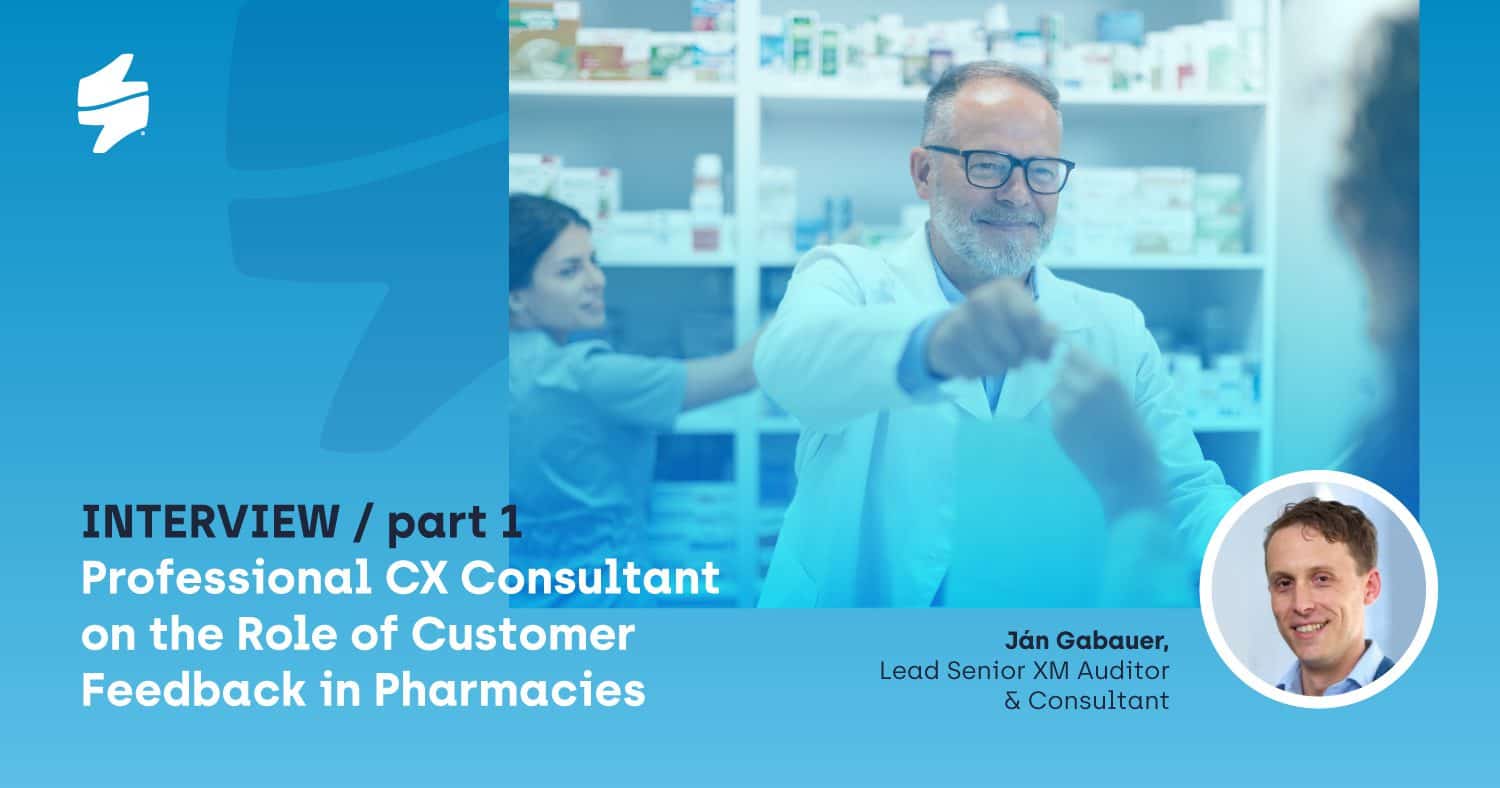Are you struggling to improve pharmacy customer service? In this interview, we sat down with Ján Gabauer, a professional CX consultant, to discuss the importance of customer feedback in the pharmacy industry and how it can bring lasting improvements.
In part 1 of this interview, Ján shares his expertise on the challenges pharmacies face in gathering and utilising feedback effectively, as well as success stories of how our pharmacy customer feedback tool has positively impacted pharmacies.
Without further ado, let’s dive into the world of customer experience in the pharmacy industry!
1. How important is customer feedback in the pharmacy retail, and why?
In the pharmacy market, there are different networks and individual pharmacies competing for customers. Initially, pharmacy networks can acquire customers by adding individual pharmacies to their chain. But once all the pharmacies are part of the network, growth relies more on satisfying customer expectations and attracting customers from specific segments or local areas. This means it’s not just about having a good product selection and physical stores, but also providing excellent service that meets customer demands.

Pharmacists are essential in delivering quality service, thanks to their education and expertise. However, it’s crucial to ensure they are customer-oriented and meet expectations. Customer feedback and the casting process are vital in aligning pharmacist service with customer ideals.
In the end, customers make decisions based on how they perceive and experience things, rather than objective reasons. So, in this stable (or soon-to-be-stable) market, the fight for customers and revenues will mainly happen at the service level.
2. What are some common challenges that pharmacies face when it comes to gathering and utilising patient feedback effectively?
Their way of thinking presents its own challenge. The pharmaceutical industry is experiencing strong growth, and pharmacies have a monopoly on their products. This allows them to sell at high-profit margins without feeling the need to make changes.
This mindset is common among sales channel managers in the industry, who often focus on acquiring more stores or relying on market growth for profits instead of improving other aspects like pharmacy customer satisfaction.
Secondly, it can definitely be challenging to change the behaviour of pharmacists when it comes to customer service. One of the main reasons is that the pharmaceutical market is limited, and there is actually a shortage of highly educated pharmacists. So, instead of focusing on improving customer service, pharmacies often prioritise increasing sales through their product offerings.


In 2 years, through the collection and implementation of customer feedback, there was a significant improvement in pharmacist variation and overall performance. (Data from Dr.Max Slovakia)
Additionally, there is a significant variation in how individual pharmacists approach customer service within a network or even within a country. While some pharmacists are highly motivated and provide excellent service, others may not be as dedicated. This variation is usually more prominent within a single market or network, but it can provide valuable feedback for improving overall service.

Then, one of the main challenges is managing peak demand during certain times of the day. It can be a real struggle for pharmacies. One solution is to add more pharmacists, but that’s not always feasible due to limited resources. Many pharmaceutical retail networks prioritise their commercial interests and are reluctant to hire additional staff and reduce wait times in pharmacy. Another factor is that pharmacists are not always paid high salaries, which makes the profession less attractive.
These are the common challenges faced by many pharmacies. Although they receive feedback, they often fail to actively address the issues because they can still demonstrate good results due to the growing business. They continue to rely on traditional sales models that have brought them success in recent years.
3. Can you share any success stories or examples of how customer feedback has positively impacted pharmacies?
In the pharmaceutical retail network, it is crucial to prioritise the customer experience and measure it in some way. When our clients implement a pharmacy customer feedback tool, immediate improvements in results can be observed, such as enhanced quality and overall satisfaction of customers during their visit, as well as better performance of the pharmacists. Access to customer feedback allows managers to communicate with pharmacists, providing them with insights into their work and motivating them to improve and excel. Pharmacists aim to replicate successful interactions with customers, reducing employee variability and enhancing overall performance within the pharmacy chain.

Pharmacies have a great advantage in cross-selling and upselling due to their ability to provide genuine customer service. Pharmacists can identify customer needs and offer products they may not be aware of. This creates a win-win situation, with customers leaving with suitable products and pharmacists increasing sales by adding value, as we observed in the case of Dr.Max. The Slovak branch of Europe’s leading pharmacy chain actually managed to boost its incremental monthly revenue by 25% just by focusing on its pharmacists’ approach.

Data from on-site discussion with the retail management of Dr.Max Romania in 03/2023.
Last but not least, smart clients create an environment that allows pharmacists to focus on identifying needs and offering suitable products, without being overwhelmed by long queues. These practices can be part of a continuous improvement process or implemented during specific seasons to increase sales and provide comprehensive service. By adequate floor management based on patient feedback, our clients not only reduce wait times in pharmacy, but also provide pharmacists with space to identify needs and recommend suitable products to customers.
4. In your opinion, what are the key elements of a successful customer feedback program in a pharmacy setting?
Well, it’s actually pretty simple. The key is to collect feedback at the transaction level. Having a solid pharmacy loyalty program in place is crucial. It allows us to identify which customer made which purchase, so we can address their specific needs. Spontaneous feedback is okay, but targeted feedback always gives better results.

In the next round, retail management needs to fully embrace the idea that every customer experience is part of their daily operations. They shouldn’t see it as an add-on, but rather as a regular part of their work. They should be looking at customer feedback on a daily basis and discussing it with their team. This way, they can make informed decisions to improve pharmacy customer service.
Another important element is ensuring that pharmacists have sufficient information and training to explain to customers why they may or may not need a particular product. Responsibility for this lies with the management, preferably someone at a higher level like the owner of the company or a country/store manager.

It’s also crucial to make the feedback specific to each pharmacist and address any issues regularly. Both positive and negative feedback should be discussed, and a manager should be there to explain any negative feedback to the pharmacist. It’s important to remember that not all negative feedback is about their performance. There are external factors like pricing or product availability that they can’t control.
To Be Continued
Coming up next, in PART 2 of this interview, Ján will discuss strategies for pharmacies to encourage customer feedback, key pharmacy customer satisfaction metrics to prioritise, and effective ways to address negative patient feedback. Stay tuned!

Get the Most Out of Customer Feedback with Mastery Shopping®
Stop relying on one mystery shopper and get real feedback from the people who matter most – your customers. Discover what’s really going on in your business and start making smarter decisions today.
